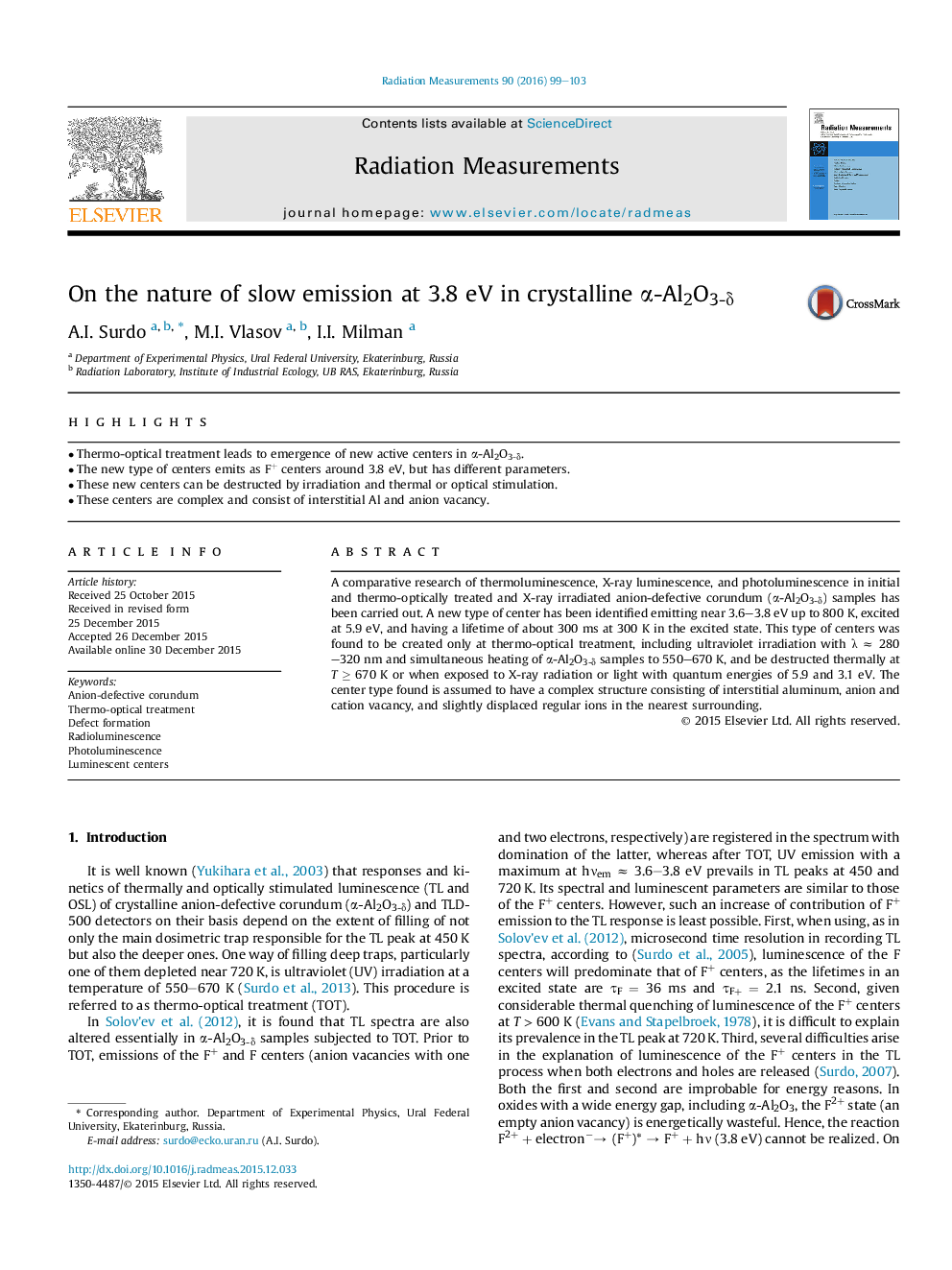| کد مقاله | کد نشریه | سال انتشار | مقاله انگلیسی | نسخه تمام متن |
|---|---|---|---|---|
| 1888020 | 1533400 | 2016 | 5 صفحه PDF | دانلود رایگان |

• Thermo-optical treatment leads to emergence of new active centers in α-Al2O3-δ.
• The new type of centers emits as F+ centers around 3.8 eV, but has different parameters.
• These new centers can be destructed by irradiation and thermal or optical stimulation.
• These centers are complex and consist of interstitial Al and anion vacancy.
A comparative research of thermoluminescence, X-ray luminescence, and photoluminescence in initial and thermo-optically treated and X-ray irradiated anion-defective corundum (α-Al2O3-δ) samples has been carried out. A new type of center has been identified emitting near 3.6–3.8 eV up to 800 K, excited at 5.9 eV, and having a lifetime of about 300 ms at 300 K in the excited state. This type of centers was found to be created only at thermo-optical treatment, including ultraviolet irradiation with λ ≈ 280–320 nm and simultaneous heating of α-Al2O3-δ samples to 550–670 K, and be destructed thermally at T ≥ 670 K or when exposed to X-ray radiation or light with quantum energies of 5.9 and 3.1 eV. The center type found is assumed to have a complex structure consisting of interstitial aluminum, anion and cation vacancy, and slightly displaced regular ions in the nearest surrounding.
Journal: Radiation Measurements - Volume 90, July 2016, Pages 99–103